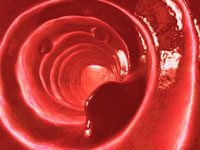Until now, doctors break their heads over why a tumor is developing called «Feochromocytoma». However, you can't call this disease completely unexplored. What happened about the ohromocytoma, read in this article.
Content
Feochromocytoma is a hormonal-active tumor. Feochromocytomas, also known as chromaffine tumors and more often in the brain layer of adrenal glands. Outside of adrenal glands of feochromocytomas are formed from the so-called chromaffine cells, referred to as non-propellant pomechromocytes or paragangliomas.
Feochromocytoma may occur at any age, but often in the period between youth and maturity, men and women (a little more often).
Causes of the disease while science are unknown, but there is an opinion on the genetic nature of feochromocytomas.
A frequent sign of the disease is hypertension, more than half of the paroxysms of hypertension or crises occur, often bright and heavy.
Violations of metabolism, in particular, carbohydrate and protein, as well as the functional state of the pancreas and thyroid glands are essential.
The tumor is more often localized in one of the adrenal glands, is benign. In adult patients more often have one-sided tumors, develop mainly on the right. Less frequently develops a two-way process and a tumor located outside the adrenal glands. Feochromocytomas can reach large sizes (more than 3 kg), but most of them have a mass of less than 100 g, and the diameter is less than 10 cm. Less than 10% of them malign.
 Foohromocytoma distinguish between localization:
Foohromocytoma distinguish between localization:
- Family Feochromocytoma - often there are two-sided adrenal foohromocytoma, in a combination with another pathology (as multiple endocrine neoplasia - Meng II type).
- Lumpy adhesive feochromocytomas. Mass - 20-40 g, diameter less than 5 cm. Most of them are located in the abdominal cavity. With inclusive localization, the predominance of the production of norepinephrine is noted, which is manifested by bradycardia, an increase in systolic and diastolic blood pressure.
In the localization in the brainstant of adrenal adrenalities of feochromocytomas, there is an excess of adrenaline products, which is accompanied by tremor, emotional excitation, the expansion of pupils, tachycardia, hyperglycemia, an increase in systolic blood pressure. Feochromocytoma, localized in the wall of the bladder, causes typical seizures when urination.
There are two types of tumors: a tumor producing adrenaline and a tumor producing norepinephrine. By the nature of hypertension divided into forms: paroxysmal (70%), constant, mixed.
Permanent and mixed - based on the disease lies the emission of physiologically active substances of catecholamines, which is accompanied by tremor, hypertension, sweating, tachycardia.
Paroxysmal form - manifests the occurrence of hypertensive crises against the background of normal or elevated blood pressure. Paroxysmal Embodiment of Feochromocytoma - Acute Hypertension, which is characterized by a sudden increase in blood pressure and reduced it. The patients develop hypertrophy of the left ventricle on the one hand, on the other hand, the myocardial dystrophy, frequent complication is stagnant heart failure. The frequency of hypertensive crises differs from once a month to 12-13 times a day, increases with the duration of the disease.
The form of feochromocytomes with constant hypertension (without crises) is less common. The flow of stable shape resembles a malignant hypertension with complications inherent with complications - nephrosclerosis, sclerosis of coronary vessels and brain vessels, myocardial infarction. Sugar diabetes can develop in patients with this form (10%).
The asymptomatic form of the disease is rare, with this form, the tumor does not have pronounced hormonal activity. In some patients in the stressful situation (during childbirth, injuries, operations), shock is developing or acute adrenal insufficiency.
Microscopically distinguished mature and immature (malignant) feochromocytes.
Benign Options Feochromocyte differ in small sizes. The diameter does not exceed 5 cm, weight - 90-100 g. They are characterized by slow growth, tumor elements do not germinate the capsule, usually - one-sided. However, small sizes do not exclude the malignant nature of tumor growth.
Malignant feochromocytomes (feuhromoblastoma) are much larger, with a diameter of 8 to 30 cm and weighing up to 2 kg or more, often double-sided, multiple. Metastasis Feochromoblast can be manifested for many years. Most of the tumors of the Localization adrenal glands are combined with the massive development of the brown tissue, the most more often found in the retroperitoneal space. Large tumors squeezing some internal organs cause changes inherent in hypertension.









